|
|
|
Monday, March 21st, 2016
It’s amazing to me, but looking back over nearly a decade of writing I find posts that still impress, with information that is as useful now as when it was written. Golden Oldies is a collection of what I consider some of the best posts during that time.
It’s been three years since I wrote this, but crowdthinking has increased geometrically, while independent thinking, let alone deep thinking, has decreased in proportion. You have only to consider the questions on Quora and the crowd’s actions/reactions at any political rally to see just how bad it’s become. Read other Golden Oldies here
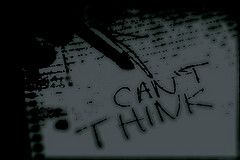
What do you think?
Do you think?
Or perhaps the question is ‘how do you think’ around the clutter and the noise.
“Nobody can think anymore because they’re constantly interrupted,” said Leslie Perlow, a Harvard Business School professor and author of “Sleeping With Your Smartphone.” “Technology has enabled this expectation that we always be on.” Workers fear the repercussions that could result if they are unavailable, she said.
Of course, there is the alternative of ‘why bother thinking’ when one can just ask and receive crowdsourced thoughts on any subject imaginable; from where/what to eat to raising your kids to how/when to die.
But what happens to the crowd when everybody stops bothering to think?
At that point the old saying, everyone has a right to be stupid, but some just abuse the privilege, kicks in with a vengeance.
Rather than joining the crowd, take time to think; you may be one of the few left who do.
Flickr image credit: Alyssa L. Miller
Posted in Golden Oldies | No Comments »
Friday, March 18th, 2016
A Friday series exploring Startups and the people who make them go. Read all If the Shoe Fits posts here
 Startup life, especially for founders, is notoriously fast-paced, with thinking time devoted to product development, funding, growth, funding, user acquisition, funding, hiring, funding, etc. Startup life, especially for founders, is notoriously fast-paced, with thinking time devoted to product development, funding, growth, funding, user acquisition, funding, hiring, funding, etc.
Add to that the need/desire to interact with family and friends, compulsion to keep up with social media and daily chores, such as eating, sleeping, bathing, etc. and many will say that carving out time for quiet reflection is a nonstarter.
That said, no thinking entrepreneur questions the enormous value of attending Steve Blanks annual Lean LaunchPad class — since it offers far more than any accelerator.
It’s the difference between buying fish and learning to fish — the latter provides a lifetime of value, while the former is short-lived.
Blank and his cohorts added a week to the course this year and the reason is of paramount importance — even to those not in the startup world.
This year we made a small but substantive addition to way we teach the class, adding a week for reflection. The results have made the class massively better. (…)
We realized that we had been so focused in packing content and work into the class, we failed to give the students time to step back and think about what they actually learned.
So this year we made a change. We turned the next to last week of the class into a reflection week. Our goal—to have the students extract the insights and meaning from the work they had done in the previous seven weeks.
Reflection — (in this context) a fixing of the thoughts on something; careful consideration
Back in 2011William W. George, Senior Fellow at Harvard Business School, found that making time for self-reflection was critical for anyone aspiring to a leadership role.
Before anyone takes on a leadership role, they should ask themselves, “Why do I want to lead?” and “What’s the purpose of my leadership?”
The kind of thinking/reflecting recommended by both Blank and George can’t be done while scanning email, texting, listening to music or any of the myriad of distractions that constantly bombard you.
You need to set aside the time, turn off your devices and give yourself time to reflect and even do some deep thinking.
You and your organization will both benefit.
Image credit: HikingArtist
Posted in Entrepreneurs, If the Shoe Fits | No Comments »
Monday, February 29th, 2016
It’s amazing to me, but looking back over nearly a decade of writing I find posts that still impress, with information that is as useful now as when it was written. Golden Oldies is a collection of what I consider some of the best posts during that time. Read other Golden Oldies here.
Are you and original or crowdsourced?
I’ve always been an original, much to my family’s consternation when I was growing up and to friends, bosses and colleagues since.
Being an original isn’t the easy way to go. It’s far more comfortable to be a copy; to follow without question the ideology, religion, parents, friends—anyone or anything that takes away the fear of making the wrong choice.
I don’t remember feeling scared as I careened through my early life taking sometimes crazy risks, but never without doing worst case analysis first.
I even adopted Frank Sinatra’s My Way as my personal theme.
FRANK SINATRA – MY WAY (FROM THE ROYAL FESTIVAL… by Mukhran
For what is a man, what has he got?
If not himself, then he has naught.
To say the things he truly feels;
And not the words of one who kneels.
The record shows I took the blows –
And did it my way!
Do you have a theme for your life?
Or do you need to ask your friends?
Posted in Golden Oldies | No Comments »
Thursday, August 13th, 2015
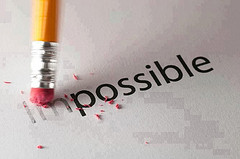
Reading/listening/watching the quantity of cyber stuff we all receive, whether by email or social media, is daunting.
It’s worth it, however, because now and then You’ll find a real jewel among all the costume jewelry and plain, old junk.
As I did with this one,
Today, I asked my mentor, a very successful business man in his 70s, what his top 3 tips are for success. He smiled and said, “Read something no one else is reading, think something no one else is thinking, and do something no one else is doing.”
which makes a great mantra for every entrepreneur.
Flickr image credit: Arya Ziai
Posted in Entrepreneurs | No Comments »
Friday, April 17th, 2015
A Friday series exploring Startups and the people who make them go. Read all If the Shoe Fits posts here
 Do you use technology to solve problems? Enhance creativity and drive innovation? Develop your team and build your people? Do you use technology to solve problems? Enhance creativity and drive innovation? Develop your team and build your people?
Years ago I wrote Fools, Tools, and Management Cool about how technology doesn’t take the place of good management.
I’ve written about the advantages of silence and the importance of unwiring and how to be Luftmenschen (people who deal in the non-tangible: ideas, thoughts, dreams).
When it comes to technology, you may want to rethink the approach.
A growing body of neuroscience research has begun to reveal the exact ways in which information age technologies cut against the natural grain of the human mind. Our understanding of all kinds of information is shaped by our physical interaction with that information. Move from paper to screen, and your brain loses valuable “topographical” markers for memory and insight.
Although screens have their strengths in presenting information — they are, for example, good at encouraging browsing — they are lousy at helping us absorb, process, and retain information from a focused source. And good old handwriting, though far slower for most of us than typing, better deepens conceptual understanding versus taking notes on a computer — even when the computer user works without any internet or social media distractions.
In short, when you want to improve how well you remember, understand, and make sense of crucial information about your organization, sometimes it’s best to put down the tablet and pick up a pencil.
The work described was done by the Drucker Institute and is easy to try with your people.
The great news if you want to try unplugging is that the basic techniques are simple and free. Here’s an Un/Workshop-style exercise you can try on your own time, with your own team, in just a half-hour: Including yourself, get six or more of your colleagues together. Divide yourselves into two or more small groups. Give each group one piece of paper with a single question printed on it: Who is our customer?
Depending how young your team is you may incur some minor costs — like the need to shop for paper and pencils and possibly explain how to use them.
Image credit: HikingArtist
Posted in If the Shoe Fits | No Comments »
Thursday, March 12th, 2015
FinTech, the wedding between finance and technology, is a hotbed of startups and innovation, especially in London. Now it’s lighting the fires of the investment community in Silicon Valley, so I prevailed on Ajo Fod, who knows the FinTech world well, first as a quant and now as an entrepreneur, to attend the Trading Show and share his observations with you.
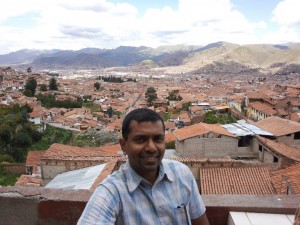 I had the pleasure of attending Trading Show West Coast 2015: West Coast’s leading quant, automated trading and big data event last week. This is one of the most legitimate trading shows I’ve seen and truly geared to professionals. I had the pleasure of attending Trading Show West Coast 2015: West Coast’s leading quant, automated trading and big data event last week. This is one of the most legitimate trading shows I’ve seen and truly geared to professionals.
The first thing that caught my eye, was the surprisingly large majority wearing business attire; I was expecting some confusion. Google tried to hold down the fort of casual-at-work and a few people were dressed in jeans, with long-sleeved shirts for good measure.
But finance won over West Coast causal even in San Francisco. My decision to dress in a brown suit and a tie was just the right measure down from full business dress.
I was impressed by the balance between different groups of professionals. Quants / traders / investors / hardware / risk management and students were all well represented.
Different scales of enterprise from startups to micro hedge funds to medium sized funds, such as AXA Rosenberg, to industry titans like BNY Mellon Financial and Blackrock were there, too.
The mix of speakers, from hardware tech providing fast access to markets to macro thoughts from Lex Huberts, was good, especially considering the audience.
Systematic trading and HFT is no longer about the fastest execution. The marginal advantage from trading faster needs to be weighed carefully against the cost of the infrastructure, while the ability to forecast farther into the future is significant.
Apparently, the fastest access to markets is provided by Algo Logic. They sell machines that race the path from tick data reception to placing trades in 1.2micro seconds!
They achieve this by storing the logic in hardware in FPGA (field-programmable gate array). They include trading logic and risk checks on the chip to achieve this kind of reaction time.
The speed is used to grab favorably priced orders before anyone else can. The winners at any speed tend to be the ones with higher algorithmic sophistication. The direction of development in this field tends to be about adding computing power to the FPGA.
The discussion on Co-location vs Cloud Servers focused on the tradeoff between speed and algorithmic sophistication.
Pravil Gupta of Quadeye Trading and Bert Shen from SuperMicro are both suppliers of HFT technology. The difference is that one is about more sophisticated but still very fast trading while the other is at the higher speed end of the spectrum.
Speed is not everything in the HFT world. The incremental speed edge costs significantly. While there will always be fast traders that grab obviously mispriced orders over a short time horizon, others will play the game of taking the not so short-term bet.
The roundtables covered a list of varied topics. As expected the round table audiences in the Bay Area were largely focused on state-of-the-art in Big Data and deep learning.
These technologies could be the future, but I don’t see as much profitable application of these technologies as there is hype.
FinTech startups seem to be numerous in data services for the finance industry. iSentium: works on estimating the sentiment of tweets. Another works on interpreting SEC filings. Strategies are being fed information faster to produce more efficient markets.
The past was a speed race. The future is going to be about more information used in smarter ways.
For example, Alpha Sangha, my startup, combines information from a variety of data-sources using complex models/algorithms that maximize profitability while filtering out noise.
Acronyms come and go, so here are three relatively new ones stay aware of.
BRIC : Brazil Russia India China
MINT : Mexico Indonesia Nigeria Turkey
ESG: refers to the three main areas of concern that have developed as central factors in measuring the sustainability and ethical impact of an investment in a company or business
Ajo Fod is the founder of Alpha Sangha, which helps companies optimize complex forecasting models or algorithms based on large quantities of past data while avoiding the common pitfall of noise. They can further increase profitability by mining for model/algorithm variants that are better fits based on historical data.
Ajo previously worked as a quant at BGI/Blackrock and Mellon. He has masters degrees in both Computer Science (AI) and Operations Research (optimization). He earned a BTech degree from the prestigious IIT-Madras.
Posted in Entrepreneurs, Innovation | 5 Comments »
Tuesday, July 15th, 2014

A month after I started this blog in 2006 I focused on the magic found in silence; magic that allows you to think, dream and innovate.
Silence is a requirement to get to know oneself. In 2007 I wrote, “My own anecdotal evidence shows that while most people are uncomfortable with silence, others are actually terrified by it.”
Two years ago I cited Edward do Bono, a giant in the world of creative thinking, who believes that boredom is the springboard of creativity.
Last year research found that the constant time spent with today’s ubiquitous screens not only affects the brain, but also reduces capacity for connection, friendship and empathy.
Now, eight years later, people’s need for distraction and abhorrence of silence have been proved.
A recent article in Bloomberg Businessweek details an experiment just how far people will go to escape solitude.
Being alone with no distractions was so distasteful to two-thirds of men and a quarter of women that they elected to give themselves mild electric shocks rather than sit quietly in a room with nothing but the thoughts in their heads.
Is this you?
Flickr image credit: Alice Popkorn
Posted in Ducks In A Row, Innovation, Personal Growth | No Comments »
Wednesday, April 2nd, 2014
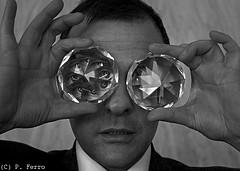
When you were little and did something you were proud of you probably yelled “look at me; look at me” to your parents or whomever was there.
These days the desire to be noticed doesn’t stop as people age, it merely moves to social media.
People have taken to putting themselves out there in all kinds of ways, producing — in words, pictures, videos — the shared stories of their lives as they are transpiring. They disseminate their thoughts and deeds, large and small (sometimes very small), in what can seem like a perpetual plea for attention.
They do it because their friends do; to raise their Klout score; to prove they matter.
The desire to matter is ancient, probably all the way back to our caveman ancestors, but it was the Greeks who named it—kleos.
Kleos lay very near the core of the Greek value system. Their value system was at least partly motivated, as perhaps all value systems are partly motivated, by the human need to feel as if our lives matter.
The difference between the Greeks’ idea of kleos and our current focus on klout is the difference between internal and external.
Mattering wasn’t acquired by gathering attention of any kind, mortal or immortal. Acquiring mattering was something people had to do for themselves, cultivating such virtuous qualities of character as justice and wisdom. They had to put their own souls in order. This demands hard work, since simply to understand the nature of justice and wisdom, which is the first order of business, taxes our limits, not to speak of then acting on our conclusions.
Of course, that kind of deep thinking is out of favor these days, since it doesn’t provide instant gratification or lend itself to shouting ‘look at me’.
Flickr image credit: Pat
Posted in Personal Growth | No Comments »
Monday, October 7th, 2013

Are you looking for an edge when interviewing, whether as boss or candidate?
Do you see benefit from strengthening your so-called EQ?
What if all it took was the willingness to read?
[The study] found that after reading literary fiction, as opposed to popular fiction or serious nonfiction, people performed better on tests measuring empathy, social perception and emotional intelligence — skills that come in especially handy when you are trying to read someone’s body language or gauge what they might be thinking.
What is ‘literary fiction’? How does it differ from popular fiction or non-fiction stories, like biographies?
In literary fiction, like Dostoyevsky, “there is no single, overarching authorial voice,” he said. “Each character presents a different version of reality, and they aren’t necessarily reliable. You have to participate as a reader in this dialectic, which is really something you have to do in real life.”
Apparently, just as boredom is an excellent source of creativity, engaging with characters who have no obvious, predetermined course and are struggling in a plot that could go many different ways sensitizes you to the subtleties in their thoughts and actions and opens your mind to a myriad of possibilities.
The Lady and the Tiger, a short story by Frank R. Stockton, is a good example of characters, story and, in this case, an ending that guarantees deep thinking and lively discussion.
Reading is good brain exercise and choosing to read something with a great story that also gives you a decided edge in both your business and personal life is called a no-brainer.
Flickr image credit: romana klee
Posted in Communication, Personal Growth | No Comments »
Thursday, October 3rd, 2013
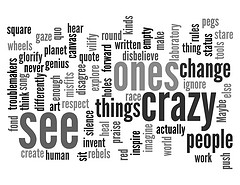
Welcome to Unreasonable at Sea, a four-month-voyage that aimed to combine the shipboard campus of Semester at Sea with the entrepreneurial zeal of globalized markets and the do-gooder communal spirit of a hackathon. (Read the article here)
The event, while interesting, isn’t what caught my eye; what did hit me was this remark from an attendee.
Wade Colburn, a college junior from California majoring in biomedical engineering, wasn’t one of them, but he joined this Semester at Sea program mainly because of Unreasonable. “You can do something that’s for, like, the better of the world and still make a profit,” he said. “That was a huge shift in my thinking.”
How sad is that?
Think about it; roughly 20 years old with a medically oriented major and a mindset that was completely focused on profit.
It makes you wonder how he was raised and what values he brings to the table.
One can only hope that the “huge shift in thinking” is permanent and that he shares it with his friends.
What’s your thinking?
Does it also need to shift?
Flickr image credit: Ian Aberle
Posted in Entrepreneurs | No Comments »
|
 Subscribe to
Subscribe to
MAPping Company Success
About Miki 
Clarify your exec summary, website, etc.
Have a quick question or just want to chat? Feel free to write or call me at 360.335.8054
The 12 Ingredients of a Fillable Req
CheatSheet for InterviewERS
CheatSheet for InterviewEEs™
Give your mind a rest. Here are 4 quick ways to get rid of kinks, break a logjam or juice your creativity!
Creative mousing
Bubblewrap!
Animal innovation
Brain teaser
The latest disaster is here at home; donate to the East Coast recovery efforts now!
Text REDCROSS to 90999 to make a $10 donation or call 00.733.2767. $10 really really does make a difference and you'll never miss it.
And always donate what you can whenever you can
The following accept cash and in-kind donations: Doctors Without Borders, UNICEF, Red Cross, World Food Program, Save the Children
*/
?>About Miki
About KG
Clarify your exec summary, website, marketing collateral, etc.
Have a question or just want to chat @ no cost? Feel free to write
Download useful assistance now.
Entrepreneurs face difficulties that are hard for most people to imagine, let alone understand. You can find anonymous help and connections that do understand at 7 cups of tea.
Crises never end.
$10 really does make a difference and you’ll never miss it,
while $10 a month has exponential power.
Always donate what you can whenever you can.
The following accept cash and in-kind donations:
|





 Startup life, especially for founders, is notoriously fast-paced, with thinking time devoted to product development, funding, growth, funding, user acquisition, funding, hiring, funding, etc.
Startup life, especially for founders, is notoriously fast-paced, with thinking time devoted to product development, funding, growth, funding, user acquisition, funding, hiring, funding, etc.






